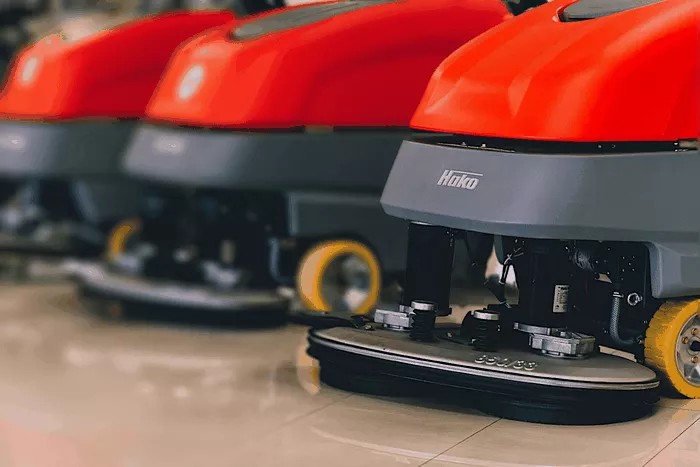Mopping is a fundamental task in maintaining clean and hygienic floors. The technique you use can significantly impact the cleanliness of the floor and the efficiency of the cleaning process. To achieve the best results, it’s essential to use proper tools and techniques. This article will guide you through the cleanest way to mop a floor, providing detailed instructions on preparation, mopping techniques, and post-mopping care.
Introduction to Floor Mopping
Why Proper Mopping is Important
Proper mopping ensures that floors are not only clean but also free from germs and bacteria. Effective mopping reduces the risk of slips and falls and helps maintain a hygienic environment. Understanding the best practices for mopping can make this task more efficient and less time-consuming.
Essential Tools and Supplies
Before starting, gather all necessary tools and supplies. The right equipment can make a significant difference in the quality of your cleaning.
1. Mop
Types of Mops: Choose between traditional string mops, flat mops, or sponge mops based on the type of floor and personal preference.
Material: Microfiber mops are highly effective for picking up dirt and reducing streaks.
2. Bucket
Dual-Bucket System: A bucket with a wringer allows you to separate clean and dirty water, which is crucial for maintaining cleaning effectiveness.
3. Cleaning Solution
Floor Cleaner: Use a floor cleaner that is suitable for your floor type (wood, tile, laminate, etc.).
pH-Balanced Solutions: For best results, choose a pH-balanced cleaner to avoid damaging the floor surface.
4. Other Supplies
Dust Mop or Broom: For removing loose dirt and debris before mopping.
Vacuum Cleaner: Useful for carpets and hard-to-reach areas.
Preparing the Floor
1. Clear the Area
Before you begin mopping, make sure the area is clear of any obstacles. Move furniture and other items to ensure you can mop every part of the floor.
Removing Loose Dirt and Debris
Sweeping: Use a broom or dust mop to sweep the floor and remove loose dirt.
Vacuuming: For more thorough cleaning, especially on carpets or textured surfaces, use a vacuum cleaner.
2. Prepare the Cleaning Solution
Fill the bucket with water and add the appropriate amount of floor cleaner according to the manufacturer’s instructions. Ensure the solution is well-mixed to achieve optimal cleaning results.
Adjusting the Solution
Concentration: Follow the guidelines for dilution. Too much cleaner can leave residue, while too little may not clean effectively.
Temperature: Use warm water for better cleaning, as it helps dissolve grease and grime.
Mopping Techniques
1. Dip and Wring the Mop
Submerge the mop head in the cleaning solution and wring out excess water. The mop should be damp but not soaking wet to prevent water from pooling on the floor.
Proper Wringer Use
Avoid Over-Wetting: Excess water can damage some floor types and lead to streaks.
Effective Wringing: Ensure the mop is adequately wrung out to avoid excess moisture.
2. Start Mopping
Begin mopping in one corner of the room and work your way towards the exit. This prevents stepping on freshly cleaned areas.
Mopping Technique
Use an “S” Pattern: Mop in an “S” or figure-eight pattern to avoid pushing dirt around.
Overlap Strokes: Slightly overlap each stroke to ensure complete coverage and prevent streaks.
3. Rinse and Refill
Regularly check the bucket for dirty water. If the water becomes too dirty, empty and refill the bucket with fresh cleaning solution. This helps maintain cleaning efficiency.
Frequency of Rinsing
Maintain Clean Water: Frequent rinsing ensures that the mop remains effective and that dirty water does not spread to clean areas.
Change Solution as Needed: If cleaning a large area, change the solution periodically to avoid spreading dirt.
4. Drying the Floor
After mopping, allow the floor to air dry. Ensure proper ventilation to speed up the drying process and avoid slipping hazards.
Avoid Foot Traffic
Dry Completely: Do not walk on the floor until it is completely dry to prevent tracking dirt back onto the surface.
Use Fans or Open Windows: Improve drying time by increasing airflow in the room.
see also: What Are the Two Main Types of Scrubbers?
Post-Mopping Care
1. Clean the Mop and Bucket
After mopping, clean the mop head and bucket to prevent the buildup of bacteria and odors.
Mop Head Care
Rinse Thoroughly: Rinse the mop head with clean water to remove any remaining cleaning solution and dirt.
Dry Properly: Allow the mop head to air dry completely before storing it.
Bucket Care
Empty and Rinse: Empty the bucket and rinse it thoroughly to remove any residual cleaning solution.
Disinfect if Necessary: For additional sanitation, occasionally disinfect the bucket.
2. Inspect the Floor
Check the floor for any missed spots or residue. If necessary, perform spot cleaning to address any remaining areas.
Spot Cleaning
Use a Damp Cloth: For stubborn spots, use a damp cloth with a bit of cleaner to tackle specific areas.
Rinse and Dry: Ensure the area is properly rinsed and dried.
Conclusion
Mopping effectively involves more than just applying a cleaning solution to the floor. It requires preparation, proper technique, and post-cleaning care to ensure the best results. By following these steps—clearing the area, preparing the cleaning solution, using effective mopping techniques, and properly maintaining your equipment—you can achieve a thorough and clean floor. Understanding and implementing the cleanest way to mop a floor not only improves cleanliness but also extends the lifespan of your flooring and contributes to a healthier environment.

